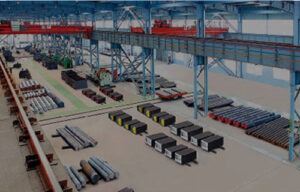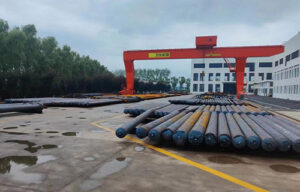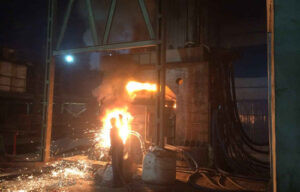Welcome to My Blog!
Before we dive into the content, I’d love for you to join me on my social media platforms where I share more insights, engage with the community, and post updates. Here’s how you can connect with me:
Facebook:https://www.facebook.com/profile.php?id=100090797846538
Now, let’s get started on our journey together. I hope you find the content here insightful, engaging, and valuable.
Introduction

Steel plate grades are classifications of steel based on their chemical composition, mechanical properties, and suitability for specific applications. These grades determine the strength, flexibility, and resistance to corrosion or wear of the steel. Choosing the appropriate grade of steel is crucial to the safety, longevity, and efficiency of a construction project.
What Are Steel Plate Grades?
Steel plate grades refer to the various categories of steel that are designed to meet specific standards of quality, durability, and performance. The different grades are determined by the steel’s chemical makeup and the processes it undergoes during manufacturing. Some steel grades are better suited for high-stress applications, while others are ideal for situations where corrosion resistance or weldability is important.
Importance of Choosing the Right Steel Plate Grade
The right steel plate grade ensures that the material can withstand the demands placed on it during its use in construction projects. For example, some projects might require steel plates with enhanced tensile strength, while others might focus on corrosion resistance or temperature tolerance. Knowing which grade to use can ultimately affect the safety and performance of the entire structure.
Top 7 Steel Plate Grades for Construction

Below are the seven most commonly used steel plate grades in construction projects, along with a detailed breakdown of their properties and uses:
ASTM A36 Steel Plate
ASTM A36 is one of the most widely used steel grades in construction due to its excellent weldability, machinability, and versatility. It is a carbon steel plate that is commonly used in the fabrication of structural components like beams, columns, and bridges.
Properties:
- Tensile Strength: 58,000 to 80,000 psi
- Yield Strength: 36,000 psi
- Applications: Structural beams, columns, and frames, general construction
Advantages:
- Cost-effective
- Easily weldable
- Good formability
ASTM A572 Steel Plate
ASTM A572 steel plates are known for their higher strength and durability compared to ASTM A36. A572 is often used in heavy-duty construction, such as bridges and high-rise buildings, due to its ability to withstand higher loads and stress.
Properties:
- Tensile Strength: 65,000 to 80,000 psi
- Yield Strength: 50,000 psi
- Applications: Heavy structural components, bridges, and cranes
Advantages:
- Excellent strength-to-weight ratio
- Higher tensile strength
- Superior resistance to wear and fatigue
ASTM A514 Steel Plate
ASTM A514 steel plates are high-strength, low-alloy steels designed for use in structural applications that require tough, durable materials. It is commonly used in the manufacture of heavy machinery, cranes, and structural steel for high-stress applications.
Properties:
- Tensile Strength: 100,000 to 130,000 psi
- Yield Strength: 90,000 psi
- Applications: Heavy-duty machinery, mining equipment, pressure vessels
Advantages:
- High yield strength and toughness
- High resistance to impact
- Excellent for tough, abrasive environments
ASTM A709 Steel Plate
ASTM A709 is a high-strength steel plate primarily used in the construction of bridges and other large structures exposed to environmental stresses. It is resistant to corrosion, making it suitable for use in areas with harsh weather conditions.
Properties:
- Tensile Strength: 70,000 to 100,000 psi
- Yield Strength: 50,000 psi
- Applications: Bridges, offshore platforms, and other heavy infrastructure
Advantages:
- Corrosion-resistant
- High strength
- Suitable for bridge and infrastructure applications
ASTM A588 Steel Plate
ASTM A588 is a weathering steel plate designed for projects requiring long-term exposure to outdoor environments. This steel plate is corrosion-resistant and forms a stable rust-like appearance when exposed to weather, eliminating the need for painting.
Properties:
- Tensile Strength: 70,000 to 90,000 psi
- Yield Strength: 50,000 psi
- Applications: Bridges, buildings in coastal areas, and industrial facilities
Advantages:
- Corrosion-resistant, even in tough weather conditions
- No need for painting, reducing maintenance costs
- Strong and durable
ASTM A240 Stainless Steel Plate
Stainless steel plates, particularly ASTM A240, are used for construction projects requiring excellent corrosion resistance, including high-rise buildings, offshore structures, and chemical plants. They are resistant to rust, staining, and corrosion from acids or chemicals.
Properties:
- Tensile Strength: 70,000 to 100,000 psi
- Yield Strength: 40,000 psi
- Applications: Chemical plants, food processing facilities, marine structures
Advantages:
- Superior corrosion resistance
- High aesthetic appeal
- Strong and versatile for various applications
Hardox Steel Plate
Hardox steel is a wear-resistant steel plate, designed to withstand high abrasion and impact. It is commonly used in industries like mining, construction, and recycling where equipment and machinery are exposed to constant wear and tear.
Properties:
- Tensile Strength: 130,000 to 160,000 psi
- Yield Strength: 100,000 psi
- Applications: Earth-moving machinery, mining equipment, and truck bodies
Advantages:
- High hardness and wear resistance
- Superior performance in abrasive environments
- Long-lasting durability
Steel Plate Grades Comparison Table

The following table provides a comparison of the top steel plate grades for construction, outlining key properties such as tensile strength, yield strength, and typical applications. This will help you understand the differences and make an informed choice based on the needs of your construction project.
| Steel Plate Grade | Tensile Strength (psi) | Yield Strength (psi) | Typical Applications | Corrosion Resistance | Weldability |
|---|---|---|---|---|---|
| ASTM A36 | 58,000 – 80,000 | 36,000 | General construction, beams, columns | Moderate | Excellent |
| ASTM A572 | 65,000 – 80,000 | 50,000 | Heavy structures, bridges, cranes | Moderate | Good |
| ASTM A514 | 100,000 – 130,000 | 90,000 | Heavy machinery, mining, pressure vessels | Low | Fair |
| ASTM A709 | 70,000 – 100,000 | 50,000 | Bridges, infrastructure | High | Good |
| ASTM A588 | 70,000 – 90,000 | 50,000 | Bridges, outdoor structures, coastal areas | Very High | Good |
| ASTM A240 | 70,000 – 100,000 | 40,000 | Chemical plants, marine structures | Excellent | Excellent |
| Hardox | 130,000 – 160,000 | 100,000 | Mining equipment, earth-moving machinery | Very Low | Fair |
Conclusion: Choosing the Right Steel Plate Grade for Your Project

Choosing the correct steel plate grade for your construction project is crucial to ensuring the safety, durability, and long-term performance of the structure. Each steel plate grade offers unique benefits, from high tensile strength to corrosion resistance. By understanding the properties and applications of each grade, you can select the one that best suits the demands of your project, whether it involves heavy-duty machinery, corrosion-resistant bridges, or durable high-rise buildings.
Always consult with professionals in the field to ensure the right selection based on your project’s specific requirements. Additionally, consider environmental factors, load-bearing needs, and cost-effectiveness before making a final decision.
FAQ
What is the most common steel plate grade used in construction?
The most common steel plate grade used in construction is ASTM A36 due to its versatile nature, cost-effectiveness, and ease of welding. It is widely used for general construction applications like beams, columns, and frames.
What factors should I consider when selecting a steel plate grade?
When selecting a steel plate grade, consider factors such as tensile strength, yield strength, weldability, corrosion resistance, and the specific requirements of your project (e.g., exposure to weather, high stress, or heavy loads).
Can I use ASTM A36 for structural applications like bridges?
While ASTM A36 is commonly used in general construction, it may not be suitable for heavy-duty applications like bridges that require higher tensile strength and corrosion resistance. For such applications, ASTM A572 or A709 would be more appropriate.
What is the advantage of using weathering steel like ASTM A588?
Weathering steel like ASTM A588 forms a stable rust layer when exposed to weather, providing enhanced resistance to corrosion without the need for painting. This makes it ideal for structures exposed to harsh weather conditions, such as bridges and outdoor buildings.
Can I weld steel plates of different grades together?
Welding steel plates of different grades is possible, but it requires careful consideration of the properties of each grade, including welding techniques and material compatibility. Consult with a welding expert to ensure the best practices are followed for a strong, reliable weld.

